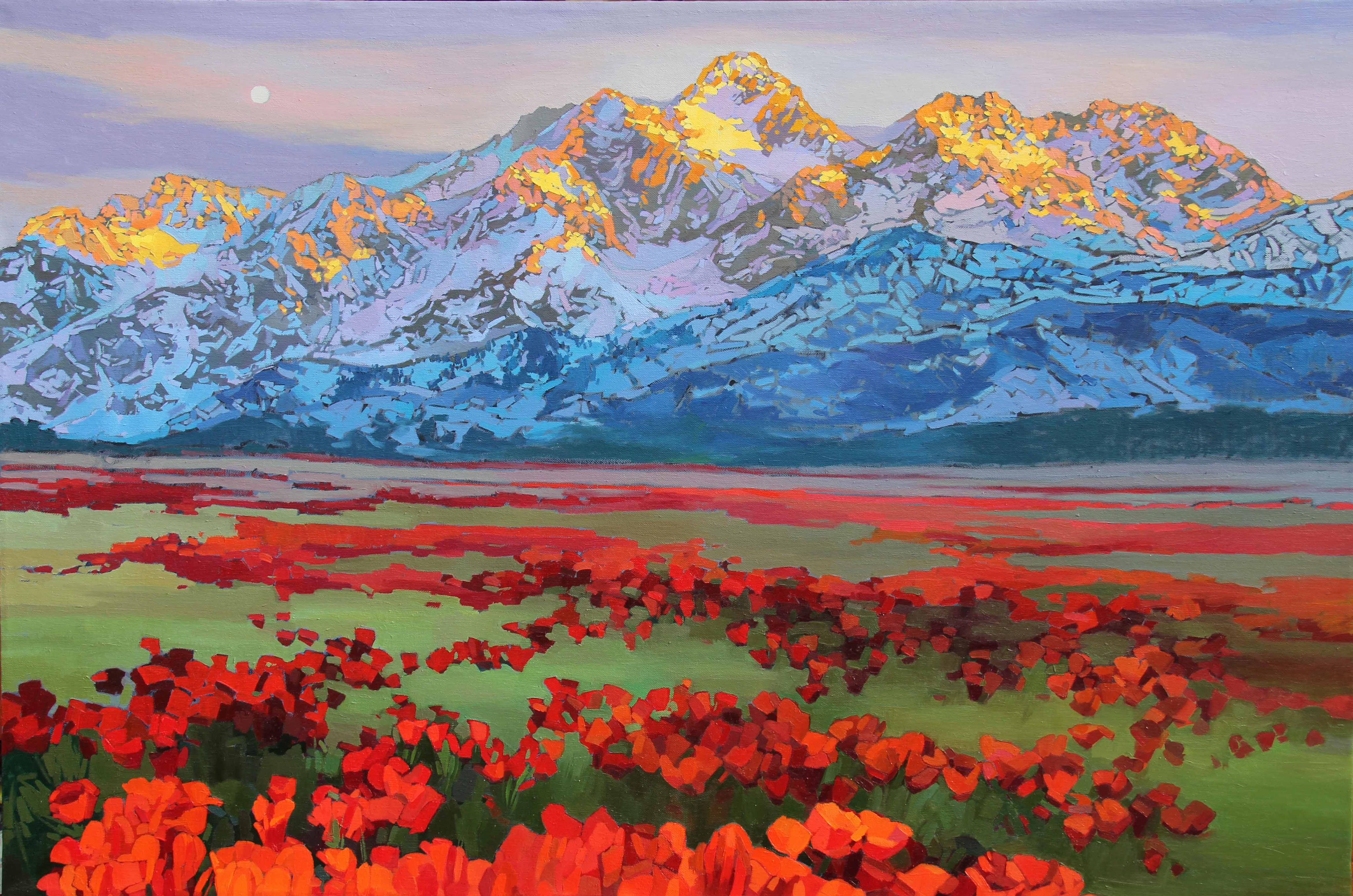
American influences, feminism, and globalisation were the themes of choice. Although admittedly it took a backseat from against more political and emotional art with the rise of Abstract Expressionism and the post-modern Pop Art. Throughout this century and into the 20 th century, the modernist movement prevailed, however, the landscape continued to inspire artists. It was a revolutionary movement in regards to landscape art and was possibly the turning point to when artists adopted a more painterly style impressionism and post-impressionism was certainly one of the most influential art movements created in Europe. Of course, this was not to last forever, as the Impressionist era born in Paris became the style of the 19 th Century. At this point, the Romantic era was in the spotlight, so to speak isolated and wild landscapes were the favoured subjects – they were realistic, yet highly romanticised. With the decline in the popularity of religious paintings, landscape art had definitely become one of the most (if not the most) popular styles by the early 19 th century. Hugh Wilkinson View of a New Forest Stream It is important to note that throughout this time, although landscapes were included in paintings, many still included figures and the humanistic element. The sky has always been one of the more important features in this style of art, as this is arguably the feature that provides each painting with a certain mood, or even emotion. From the late 17 th century through to the 19 th century, artists became specialists in their chosen fields, however perhaps the most notable aspect of most landscape paintings is the realistic depiction of weather, and of course light.

The genre as a whole began to expand, sub-genres or sub-subject matters started to appear, such as forests, woodland, farm battle scenes, and coastal depictions. This technique is where the artist places an object or specific element on one edge of the painting, so that it draws the eye of the viewer into the composition.Īt first landscape paintings were a display of skill, but soon became incredibly fashionable, especially during the 17 th Century (referred to as the Dutch Golden Age). Many of the composition techniques used during this time are still used today in photography and post-modern realism paintings, for example, repoussoir. Many artists chose to depict exotic landscapes, as of course, leisurely travel to destinations overseas was exclusive to the upper classes who commissioned and bought paintings – Italy was certainly one of the most depicted landscapes. Pre-modernism, landscape paintings were often inspired by and drawn from literature much like many of the portrait paintings created before, which depicted myths, legends and biblical themes. This style was exceptionally popular and remained the style of choice (especially in the Netherlands and Germany) for around a century. This style included the depiction of small figures and a view of the scenery from up high. Joachim Patinir, a Dutch painter, developed a panoramic painting style, which is often referred to as ‘World Landscape’.

Artists had struggled in the past to create paintings with a true realistic depth aspect when it came to portraying landscapes and scenery however the great Dutch masters managed to solve the problem in the 16 th Century. It wasn’t just the desire for landscape paintings in the home from patrons that changed this, but the evolution of painting techniques. It was towards the end of the 15 th century when landscape became a genre in its own right and more and more popular with upper class culture. However in Western Europe, before the 15 th Century, landscape paintings only appeared as a part of frescos or as a background for portraits – they were a supportive aspect rather than the main subject matter.Ĭharacteristics of Early Landscape Painting Landscapes, as a subject matter, were especially popular during the time of the ancient Romans and ancient Chinese art – their famous silk and ink paintings are brimming with mountains and seascapes. The evolution of landscape paintings is certainly interesting, you would have thought that it would have been a popular subject matter from the very start, however, this wasn’t the case, especially in Western European art.

Today, landscape paintings are created with a variety of characteristics from painterly abstract styles, to vividly realistic it is safe to say that the spectrum is incredibly broad.


 0 kommentar(er)
0 kommentar(er)
